Central Media Guanyu | Zhengzhou Old Factory Transformer
Author:Henan Daily Client Time:2022.08.30
"Looking at Oriental Weekly" special writing Ma Jian
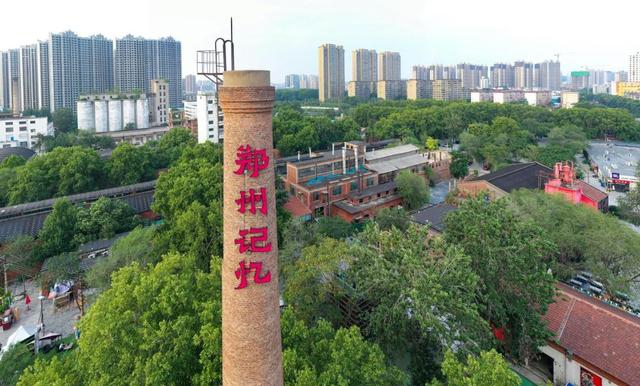
Zhengzhou Memory · Liang cool oil chemical factory Creative Park overlooks (Ma Jian/Photo)
In the 1950s, Zhengzhou was identified as an important national industrial base. A group of state -owned factories such as cotton spinning factories, cable factories, sandwheel factories, textile machinery factories, and coal mine machinery factories made an important contribution to the development of the national industrial industrial. Later, with the development of the city, many state -owned factories in Zhengzhou moved out of the main urban area one after another. Some old factories and old warehouses were vacant, becoming a historical testimony of Zhengzhou's industrial construction and urban development.
In recent years, Zhengzhou City has issued documents such as "Zhengzhou City's Science of Accelerating the Development of Cultural Industry" and "Implementation Opinions on the Land of Cultural and Creative Industry Projects". The development needs of creative industries, withdrawing from the land that is not adapted to urban functional positioning in the central urban area, coordinated to develop creative industries, accelerate the development of Zhengzhou's cultural and creative industry, comprehensively enhance the soft power of Zhengzhou culture, and continue to enhance the competitiveness of national central cities.
Therefore, a number of Zhengzhou Ersha Cultural Creative Park, Ruiguang Creative Factory, Liangku Gongghe, Zhengzhou Sesame Street · 1958 Shuangchuang Garden, Zhengzhou Memory · Liangku Oil Available Plant Creative Park, etc. The cultural and creative park came into being, allowing the old factory to rejuvenate a new vitality and bring a beautiful experience to the citizens.
Inheritance memory, integration and development
The Ersha Cultural Creative Park is located on Huashan Road, Zhengzhou City, with a total area of 845 acres.
In 1956, Zhengzhou Sand Wheel Factory started construction and was renamed the second sand wheel factory (Er Sand) in 1962. In 1964, Ersha was officially put into production through national acceptance. Beginning in 2003, with the transformation of the industry, the Ersha Factory District gradually idle.
In 2018, the Ersha Cultural Creative Park was planned as one of the "Four History and Cultural Area" construction projects in Zhengzhou, and it officially started on May 18 of the same year.
In October 2020, the Ersha Cultural Creative Park was officially opened. Relying on the "Ersha", the representative business card in the history of Zhengzhou's industrial history, while strengthening the memory inheritance of memory, the Ersha Cultural Creative Park focuses on the introduction of new formats and gradually become a model for Zhengzhou's cultural and creative industry.
According to the plan, through the leadership of the cultural and creative industry, the Ersha Cultural Creative Park will integrate creativity, technology, fashion, art, life, and even urban memory. Several major industries are committed to building Ersha Cultural Creative Park into an industrial innovation base with production -based cultural ideas.
"The reason why we chose to settle in Ersha is because we like the atmosphere here, far from the hustle and bustle, suitable for the growth of creative thinking, which can make me calm down to do something on my own. Most of them are the real target audience. "Ge Aifeng, the founder of Creative Records, introduced that his shops collected a variety of handicraft products and cultural and creative products. Provide customers with rich manual experience. "Many parents bring their children to experience pottery, purple sand, wood art, leather art, printing and other handicrafts on weekends and holidays. On the one hand, they understand traditional Chinese culture and enrich extra -curricular life on the other hand. Children like them very much."
Since the end of 2020, Ge Aifeng has shifted more to original cultural and creative products, cultural and creative designs. For more than a year, his team has created several series of cultural and creative products around Shanhai and Henan cultural elements. It has been welcomed by customers and is very optimistic.
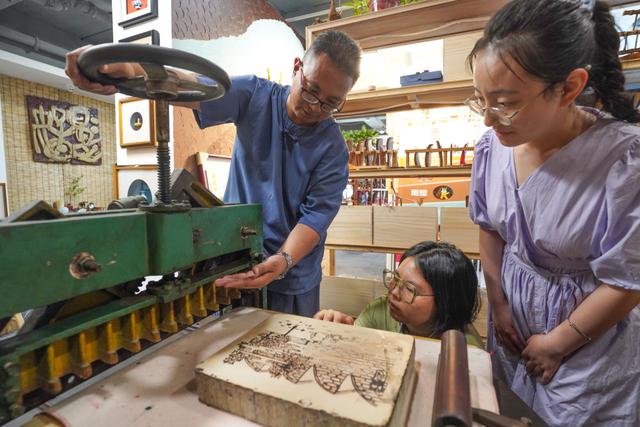
In the two -sand cultural and creative park, Ge Aifeng (first from left) and the designer with the designer to debug the old stone version of the printing equipment (Ma Jian/ Photo)
"Innovation, entrepreneurship, innovation"
The Ruiguang Creative Factory was formerly founded by the Ruiguang Printing Factory founded in October 1983. In 2013, in order to enhance the function of the central city, Zhengzhou City accelerated the organic renewal and transformation of 15 areas of the main urban area and the entire neighborhood area of the "One River", and the Ruiguang Printing Plant began to start production.
The company has moved, where does the old plant go from? Is it demolished the building economy or retaining the feelings of corporate feelings? In the end, after careful consideration, the factory decided to keep the old factory building and build a cultural and creative park.
In May 2017, the renovation of nearly 40 acres of old factories and the park's investment promotion work was fully rolled out. Up to now, more than 100 merchants have settled in the park, covering brand design, cultural media, performing arts agents, film and television production, calligraphy and painting photography, creative cloth art, e -commerce and other cultural creatives, science and technology, and the Internet. The creative agglomeration effect has basically appeared.
Wang Fengsheng was an old employee of the Ruiguang Printing Factory before, and is now the general manager of the Ruiguang Creative Factory. Wang Fengsheng said: "From property, management to marketing planning, we are still responsible for ourselves. We have comprehensive supporting facilities such as gym, apartments, conference rooms, exhibition halls, etc., free or low -cost suppliers, such as opening on weekends or holidays. The cultural and creative market stalls are all free. Through a variety of activity drainage, it is not only the service provided by our merchants, but also the exploration of vitality to maintain vitality in the park. "
The Ruiguang Creative Factory is guided by "creativity, entrepreneurship, innovation", is committed to creating cultural integration and development agglomeration areas, promoting cultural content, form and communication methods creative innovation, accelerating the development of emerging cultural industries such as cultural creativity, digital publishing, and animation games Cultural development field. Wu Jizhou and his lover operate a small shop "Word Wooden Art Studio" at the Ruiguang Creative Factory. "I can do what I like, and I can make money to support myself. This is my life." Wu Jizhou now served these woods and lived quickly.
Walking at the Creative Factory of Ruiguang, you will have a lot of surprise discovery: there are many good restaurants here, and there are bookstores named "Wild Dog Store". There are "long" cafes full of cats. Platform, there are diving halls that can practice diving ...
Since the establishment of the park, through regular and colorful activities such as Ruiguang Cultural Creative Small markets, offline talk shows, and theme exhibitions, the park's popularity has been "gather", consumes "living", and citizens' lives are "happy".
Ruiguang Creative Factory (Ma Jian/Photo)
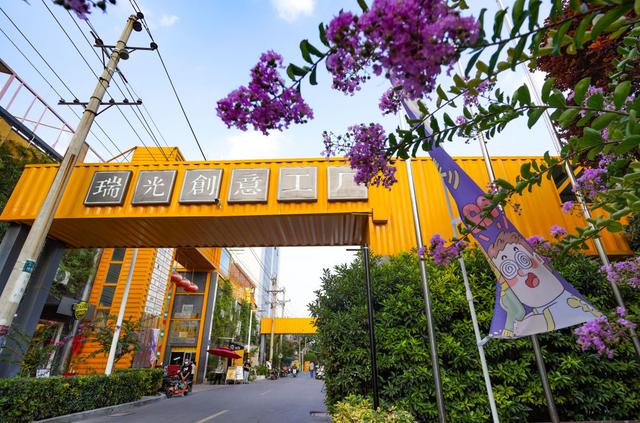
Old factory building, new story
In addition to the Ersha Cultural Creative Park and the Ruiguang Creative Plant, several other cultural and creative parks in Zhengzhou are located in old factories, each with new stories.
Located in Huiji District, Zhengzhou City, it was transformed in Xingyu Flour Factory, which was founded in 1945. The famous "locomotive" brand flour was produced here. In 2012, the old plant here began to be renovated, and a year and a half later opened the park.
The core building of the Liangku Gongxao is called "Qitang". It was originally a roof structure of the 4 -story slope. The inside was wooden beam board. It was covered with the fifth floor and set up a red on the outer wall on the south side of the 5th floor. Pentagon, leaving a distinct historical mark. Part of Qitang is now a museum, which has more than a hundred Jun porcelain boutiques that have been established since the founding of New China, witnessing the history of the production and development of Henan Jun porcelain. On the north side of Qitang, there is an old grain depot that was built in 1949 and an area of about 3,000 square meters.
In September 2016, the Liangku Gongxu was selected as the third batch of national crowd -creation space and was included in the national technology enterprise incubator management service system.
Painting in the architecture of Liangku Gongxiao (Ma Jian/Photo)

Sesame Street · 1958 Shuangchuang Park, in the old factory building of Zhengfu Machinery (Zhengzhou Coal Mine Machinery Group Co., Ltd.). The name of Sesame Street is performed by Zheng coal machine's first letter ZMJ, which means "the sesame flowers are high".
In 2018, Zhengmei Machinery Group launched Sesame Street · 1958 Shuangchuang Park Project for the transformation and upgrading of the old factory area. The total planning area of the project is 650 acres, of which 235,300 square meters of historic relics factories have distinctive characteristics of the industrial industry.
The park should retain the ancient trees, industrial manufacturing machinery, and original buildings as much as possible. At the same time, combined with modern aesthetics and fashion, we will create a special service sector that integrates office venues, urban study, industrial museums, railway parks, and sports venues. The "four districts" of industrial parks, cultural scenic spots, commercial districts, and urban communities.
Zhang Yingduo is a staff member of a network technology company in Sesame Street · 1958 Shuangchuang Park. He believes that compared to the one of the office buildings, Sesame Street is more open and fashionable. The design of the park is stronger. Aesthetics. "In the past, in office buildings, I could only sit in the conference room and think about it when I encountered a problem. Now I can find a cafe in Sesame Street.
Sesame Street · 1958 Firefly Convenience Store (Ma Jian/Photo)
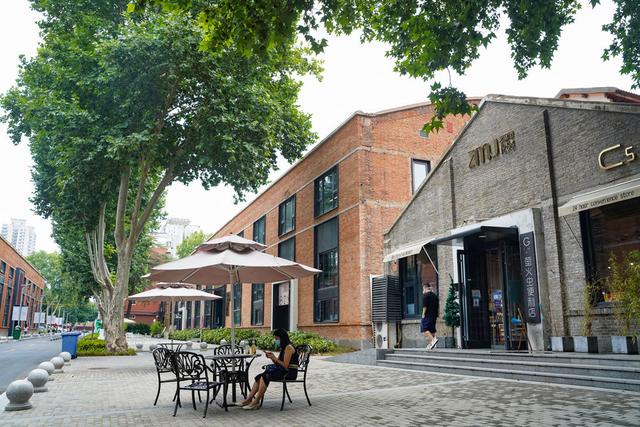
The Creative Park of Zhengzhou Memory · Liang cool oil chemical plant is near the northeast corner of the intersection of Shakou Express Road, Huanghe Road, Zhengzhou City.
Founded in 1952, Zhengzhou Grease Chemical Factory was one of the first Soviet -supported projects in the early days of the founding of New China. The Zhongzhou brand soap and "Fulaer" soap produced by produced were noisy and popular all over the country. After the factory was discontinued in 2006. The Soviet -style building of the red brick wall is transformed into a creative garden. The old factory chimney and rusty iron ladder are perfectly blended with modern sculpture and fashion flower walls.
In addition, the Cultural and Creative Parks of the Bauhinia Creative Park, the Bauhinia Creative Park, the Creative Park, the Kunlun Wangyue Art Museum transformed by Zhengzhou Cable Factory, and the Rainbow Box Art District transformed by the Roland Printing Factory from the Zhengzhou Cable Factory. In the factory building, telling his own cultural and creative stories.
Bauhinia Creative Park (Ma Jian/Photo)
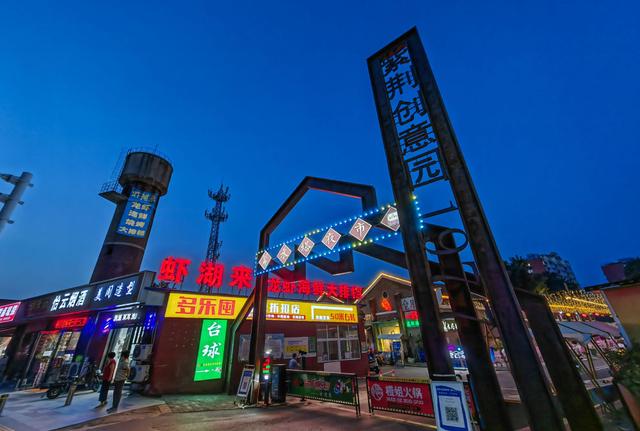
Where is the way
Regarding the status quo of the cultural and creative park of Zhengzhou old factory, some people in the industry summarize: The biggest advantage of the Ersha Cultural Creative Park is that it has a good and many cultural relic -level buildings, and its development potential is huge; Sesame Street · 1958 Shuangchuang Park is a listed company. In the old factory district of Zhengmei Machine, the company's overall transformation, management, and marketing are in place. Most of the settled in technology companies are different from other parks. Take pictures and check in; the latest Zhengzhou Memory · Liangku Oil Achievement Plant Creative Park is close to the subway entrance, with traffic advantages. Most of them are dining and commercial projects ...
Regarding the incident of the renovation of the cultural and creative park in the old factory building, Jianghai Museum, the head of the Shanhai Art Museum, is a witness and a "pioneer" in the development of Zhengzhou Cultural and Creative Park. He participated in the founding of the Ersha Art Center of the "Wilderness" in 2013. Later, the house of Ersha was recovered. He and Li Weiguo transformed the old Roland printing factory's old factory into a rainbow box. , I started a professional art gallery -Shanhai Art Museum. "I give up to manage a park and want to do more purely artistic -related things." Rainbow Box Art District (Ma Jian/Photo)
Jiang Shan believes that the oldest factory in Zhengzhou's old factory has now renovated the cultural and creative park. The biggest reason why the Ruiguang Creative Factory operates well is that they have their own properties and have autonomous and independent operating rights. If an operator of a cultural and creative park is just a lessee in the old factory, their operating costs will be relatively high and the capital recovery will be slow, and it will inevitably be more "profitable" in investment promotion, which will affect the original intention of building a cultural and creative park. In addition, because the concept of the owner and the lessee will inevitably be different, and it is difficult to change the permissions of the lessee too much property, which cannot realize the independent operation or free development of the cultural and creative park.
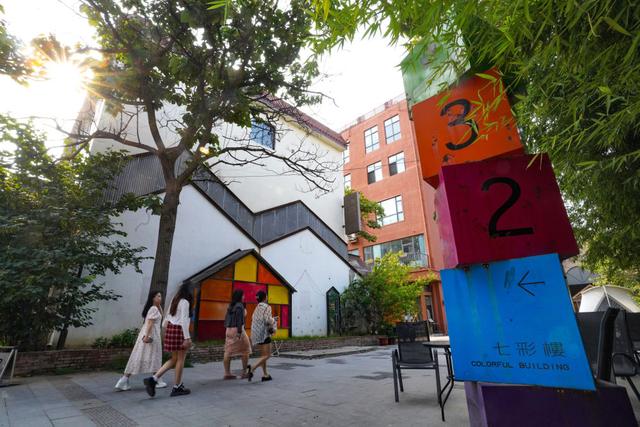
Jiang Shan said that Beijing's 798 and Shanghai's M50 Creative Park have a common feature. In the early days, the artists gathered together in the "wild" state. We will take over unified management to achieve a symbiotic and win -win relationship. Such a park allows various ecology to coexist. There are handicrafts with low rent and online companies with relatively high rent. If a park does not have the original ecology, there is a unified investment and unified planning, there are thresholds for rent, tax, and scale. Small scale artists, handicrafts, and small shops cannot settle in. It is not too rich, it is difficult to continue to develop in the direction of the Cultural and Creative Park.
At the same time, Jiang Shan believes that the development space of Henan's art development is huge. On the one hand, because of deep cultural heritage, on the other hand, the market space of cities such as Beishangguang and other cities is close to saturation. Good undertaking land. "The Stone Art Museum of Sesame Street is a Beijing operating team managed. This is a direction."
- END -
Private city: Chengde, there is a cool breeze blowing
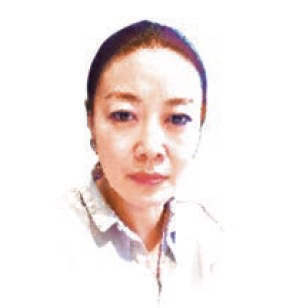
China Well -off Network Exclusive SpecialtyText | Qu XuesongBecause of the alias o...
Night reading 丨 Selling tea is also looking forward to a bowl of long summer, nine -color porcelain

The popular Menghua Record made Great Song Feng Ya and Extreme Aesthetics out of f...